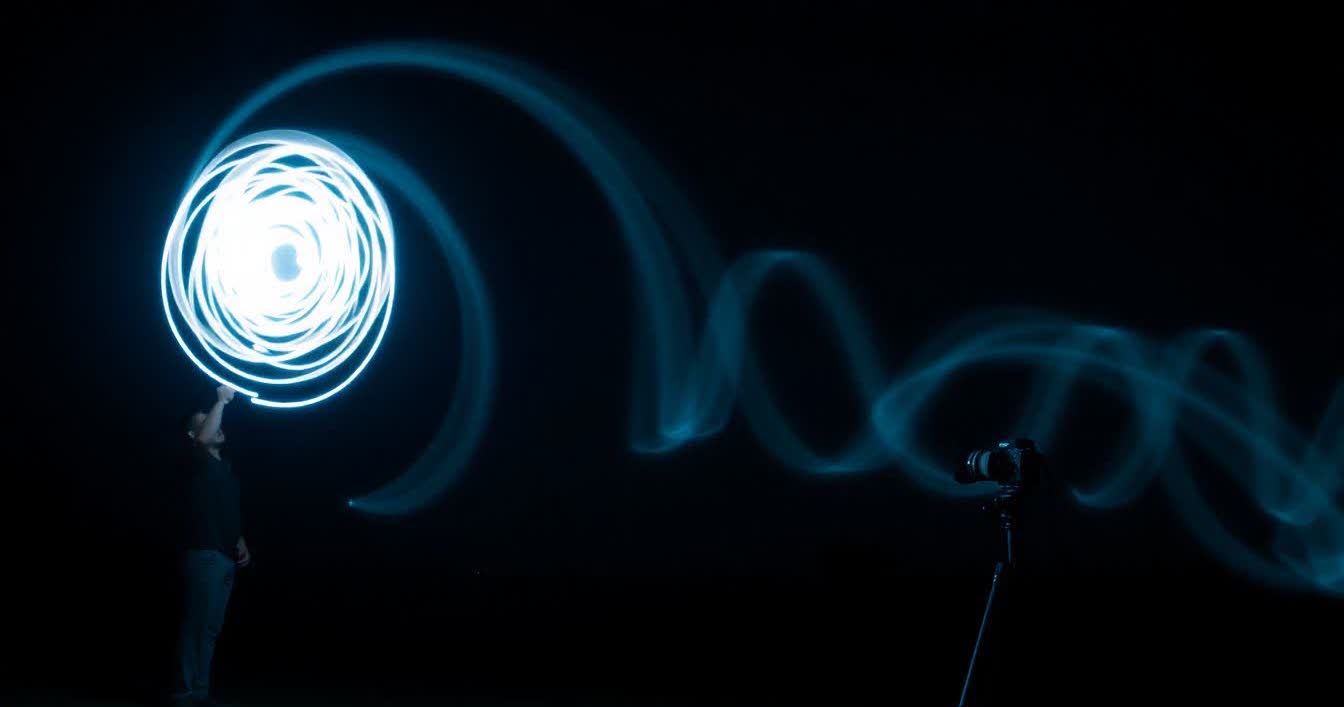June 13, 2025

Light painting is a captivating and creative photography technique that uses long exposure while moving a light source to create mesmerizing, surreal images. This technique allows photographers to paint with light, creating
luminous trails, intricate patterns, and illuminated subjects that can transform any scene into a piece of art.
Light painting is a photographic technique where a light source, such as an LED wand, flashlight, or glow stick, is moved within or across the frame during a long exposure. As the camera captures the light’s movement over time, the result is an image with streaks of light that form patterns, shapes, or illuminated subjects. The magic lies in combining artistic creativity with technical control, allowing the photographer to craft unique and visually striking photographs.
For more on long exposure techniques, check out: Mastering Long Exposure Landscape Photography
To execute light painting photography effectively, you’ll need a few essential pieces of equipment:
1. Camera
2. Tripod
3. Light Sources
4. Remote Shutter Release
Proper camera settings are crucial when light painting to ensure the light trails are captured correctly:
1. Mode: Manual (M)
2. ISO: 100-400
3. Aperture: f/8 to f/16
4. Shutter Speed: 5 Seconds to Several Minutes
5. Focus: Manual Focus
1. Drawing with Light
2. Subject Illumination
3. Light Trails
4. Combining Natural & Artificial Light
After capturing your light paintings, post-processing can help you refine and enhance the final result:
1. Color Grading
Use color grading to enhance the vibrancy of your light trails or to set the mood of the scene. You can use editing software like Adobe Lightroom or Photoshop to fine-tune the hues and tones of the image. What Is Color Grading?
2. Object Removal
Sometimes unwanted distractions, like light spill or extraneous objects, can appear in your frame. Use editing tools to remove them, ensuring that your light patterns and subjects are the focus of the shot. How to Remove Unwanted Objects
3. Presets
If you want to streamline your workflow and maintain a consistent look across your light painting photos, using custom editing presets can save you time. Create or download presets that match your desired style. How to Make Your Own Photography Presets
4. Editing Apps
Use editing apps like Adobe Lightroom, VSCO, or Snapseed to refine your photos on the go. These apps allow you to adjust exposure, contrast, and saturation, making it easy to perfect your light painting images. Best Photo Editing Apps in 2025
For more robust editing tools, explore Adobe Creative Cloud (Adobe Lightroom).
1. Scout Your Location in Daylight
Familiarize yourself with the location during the day so you can plan your shots, find interesting compositions, and avoid hazards in the dark.
2. Wear Dark Clothing
If you’re moving light sources in front of the camera, wear dark clothing to prevent yourself from showing up in the frame.
3. Experiment with Different Light Tools
Try using various light sources—each one offers a different effect. You can even combine different tools in the same shot for more complex patterns.
4. Shoot in RAW
Shooting in RAW gives you the flexibility to adjust exposure and fine-tune colors during post-processing.
For more photography tips, see: Common Mistakes in Photography and How to Avoid Them
Light painting offers several benefits that make it an exciting technique to master:
1. Creative Freedom
Light painting allows you to break free from traditional photography rules and create completely unique images.
2. Stunning Visuals
This technique can produce captivating, visually dynamic photographs that stand out.
3. Indoors & Outdoors
Light painting can be done anywhere—whether you're in a studio or outdoors at night.
4. Exposure, Light, and Composition Mastery
Learning light painting helps you improve your technical skills in exposure, lighting, and composition, making you a more versatile photographer.
To take your light painting to the next level, here are some recommended products:
Light painting photography is an exciting and creative way to explore the intersection of art and technology. It allows you to transform simple long exposure shots into mesmerizing works of art that are both dynamic and visually stunning. By experimenting with different techniques, tools, and settings, you can create truly unique compositions that stand out in the world of photography.
Remember to plan your shots, use the right equipment, and most importantly—have fun experimenting with light! The possibilities for creativity in light painting are endless.
Feel free to explore more photography resources with these helpful links:
Stay up to date with the newest tips, gear reviews, and step-by-step guides to elevate your photography journey from home and beyond.